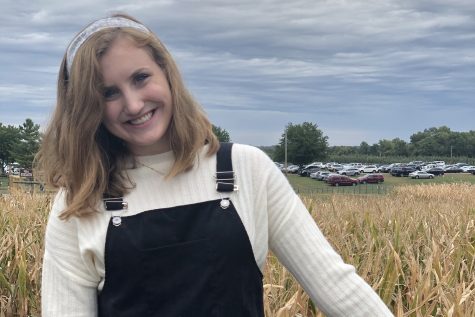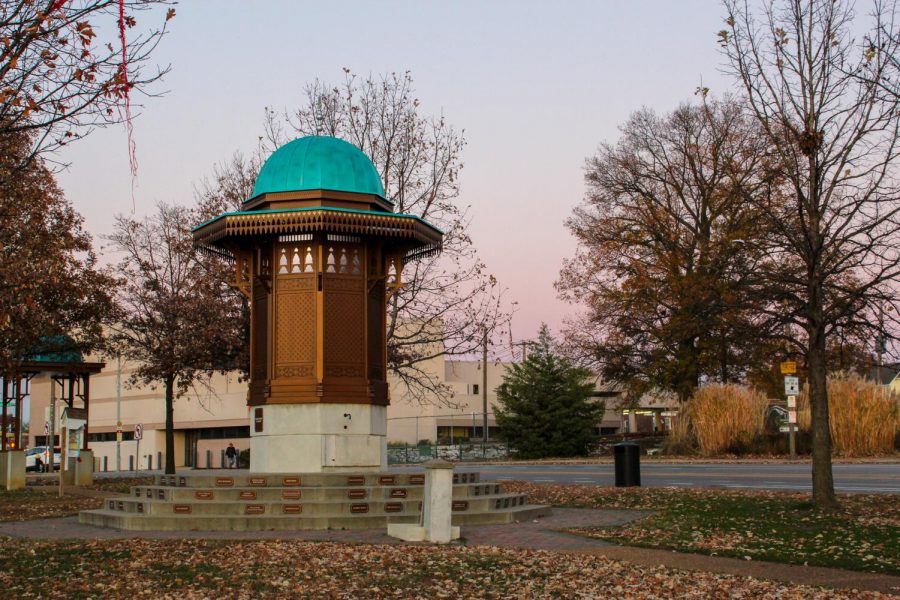Experience the Rich Culture of “Little Bosnia” in St. Louis
The St. Louis Sebilj Fountain in “Little Bosnia.”
For SLU students looking for a taste of international travel without the travel, drive to South St. Louis for a peek into Bosnian life. “Little Bosnia” is the affectionate name of the St. Louis community Bevo Mill. In 1992, civil war broke out in Bosnia and Herzegovina, forcing thousands of refugees to seek resettlement in the United States. Thousands of the Bosnian refugees were sent to St. Louis to start a new life. This created a tight community in St. Louis of around 70,000— the largest number of Bosnians outside of Bosnia in the world. Bosnian refugees have built a home in St. Louis with thriving businesses in Bevo Mill as well as in the nearby suburbs.
It can be overwhelming when looking at the community of Bevo Mill to decide what to do first. Najda Samardzic, a sophomore at SLU studying sociology whose parents came to the U.S. as refugees, had advice on how to tackle the area. When asked about how to visit the area in a culturally sensitive way, Samardzic answered that the main thing to remember is that not all Bosnian immigrants are going to be the same. “Some areas are poorer than others, so knowing not to brag about all of the things you have back at home can really be more beneficial than not. We are easy people to talk to and straightforward. I guess it is the foreign in us that makes us that way. Overall, it is a beautiful place and I know so many people that go there frequently, and not once do I hear them complain.”
One starting point in Bevo Mill could be the St. Louis Sebilj Fountain, a replica of a famous monument built to commemorate the relationship between St. Louis and the Bosnian community.
And when it comes to experiencing any new culture, most would argue that the most important step is trying the food. The same is true for Bevo Mill. Samardzic recommends several local eateries: Berix, Biser, and J’s Pitaria. As far as specific food, any pita is good to try, with Samardzic’s favorite being krompirusa.
For students looking for freshly baked bread or a sweet treat, Bevo Mill also has several bakeries. Samardzic’s advice: “If we are thinking bread wise, the best places to go are Biser and Zito, however, if you are thinking sweets, it would be Halal Meat given that they have a whole variety of options to choose from.” While this list of dining options may already be overwhelming, there is one more key part of Bosnian dining and community that we have not looked at yet.
To college students, coffee already seems like an integral part of daily life. However, coffee has a different but arguably more important relationship with the Bosnian community. Coffee is described as the foundation of social life as people gather around a hot fildzan to talk and relax. This relationship is described by Samardzic: “Drinking coffee is a normal thing for Bosnians considering that they drink it multiple times a day and they always have someone with whom they can interact with.” She recommends stopping in at Vivid Cafe or Grbic for a taste of Bosnian coffee.
Driving to Bevo Mill or the surrounding suburbs is a great way to be exposed to the Bosnian community in St. Louis. Bosnia also had ties to Saint Louis University. Patrick McCarthy, Associate Dean of University Libraries at SLU, wrote a book on one Bosnian family in St. Louis after the Bosnian civil war. There is also the Bosnian-Herzegovina Student Association at SLU which Najda Samardzic is a part of. She describes this association: “It is about bringing together the people and sharing the experiences of those who are interested in learning more about the culture’s history.” Little Bosnia is a rich, thriving community right here in St. Louis that all SLU students should consider experiencing.
Your donation will support the student journalists of Saint Louis University.







Adi • Dec 3, 2020 at 5:08 am
The writer should have educated herself that what happened in 1990s in that part of the world was not a “civil war”but a genocidal aggression by 2 neighboring countries on Bosnia and their Muslim population, who were left unarmed due to embargo by UN and therefore unable to protect themselves, leading to loss of life being almost exclusively on the Bosnian/Muslim side. A civil war indicates people inside a country fighting each other and being similarly armed, which certainly is not what happened here.
Charles J Budde • Nov 27, 2020 at 10:53 am
The untold story of the area referred to is the story of immigration in this country. The Germans, Irish, Latinos, Vietnamese and many others have swept through this same area. They came with nothing but the willingness of their hands and the determination of their spirits. The jobs, which existed then at the brewery and the auto plants were the engines. Their families and the system of schools and churches supported their efforts. They rented, then they bought, then they integrated and moved up and away. The next wave came and repeated the process. Unfortunately and significantly, the engines are gone. The employment engines for unskilled or minimally skilled workers in St Louis are gone and will never (!) be rebuilt or replaced. The Bevo area will continue to descend into a lower and lower income area when it was once the launching pad. It is now a cul-de-sac of poverty because the type of jobs which build and maintain society are gone and no political decision is going to vary that. Bevo is an amazing historical phenomenon locked in the past tense.